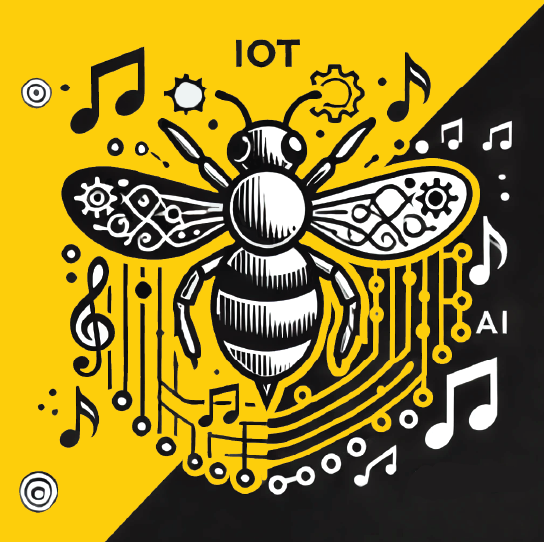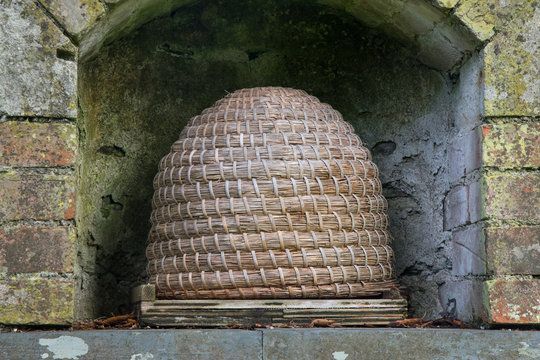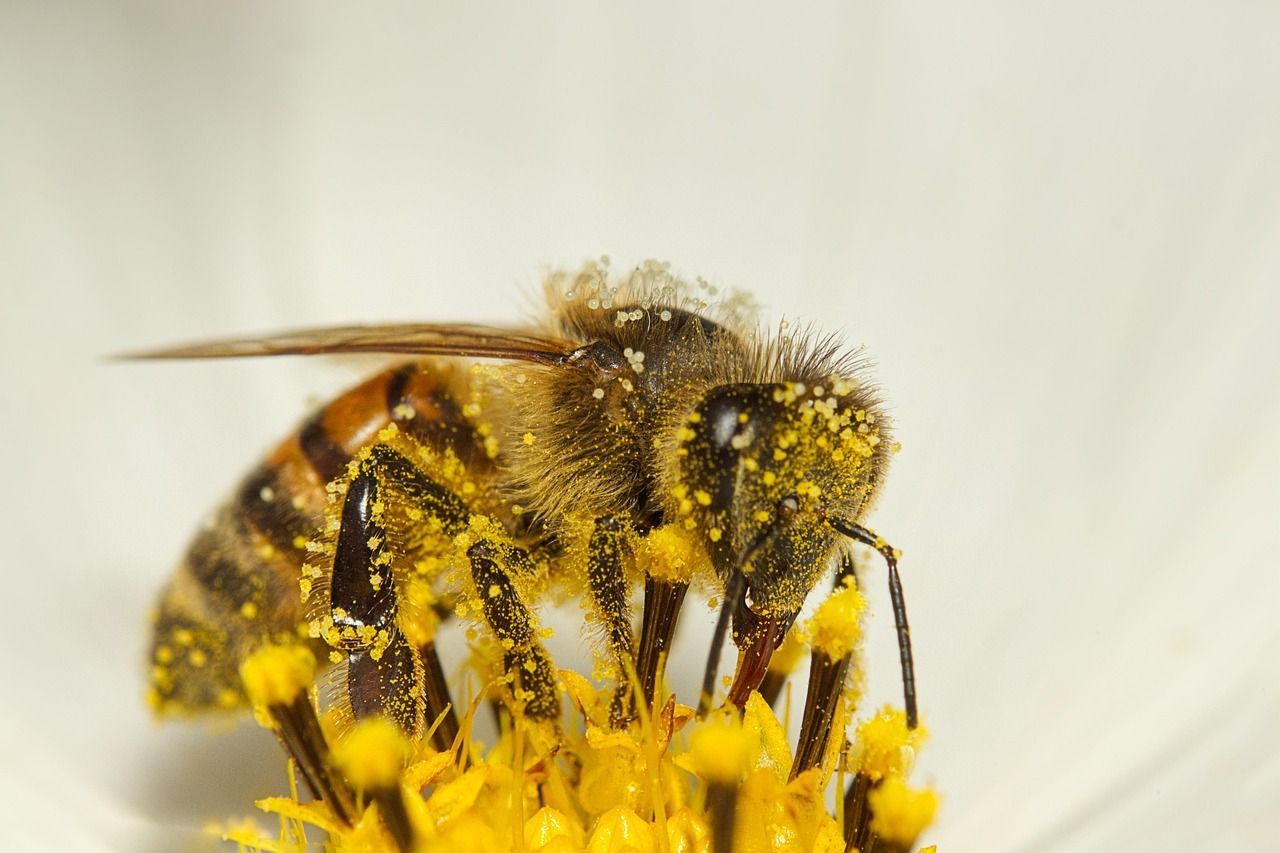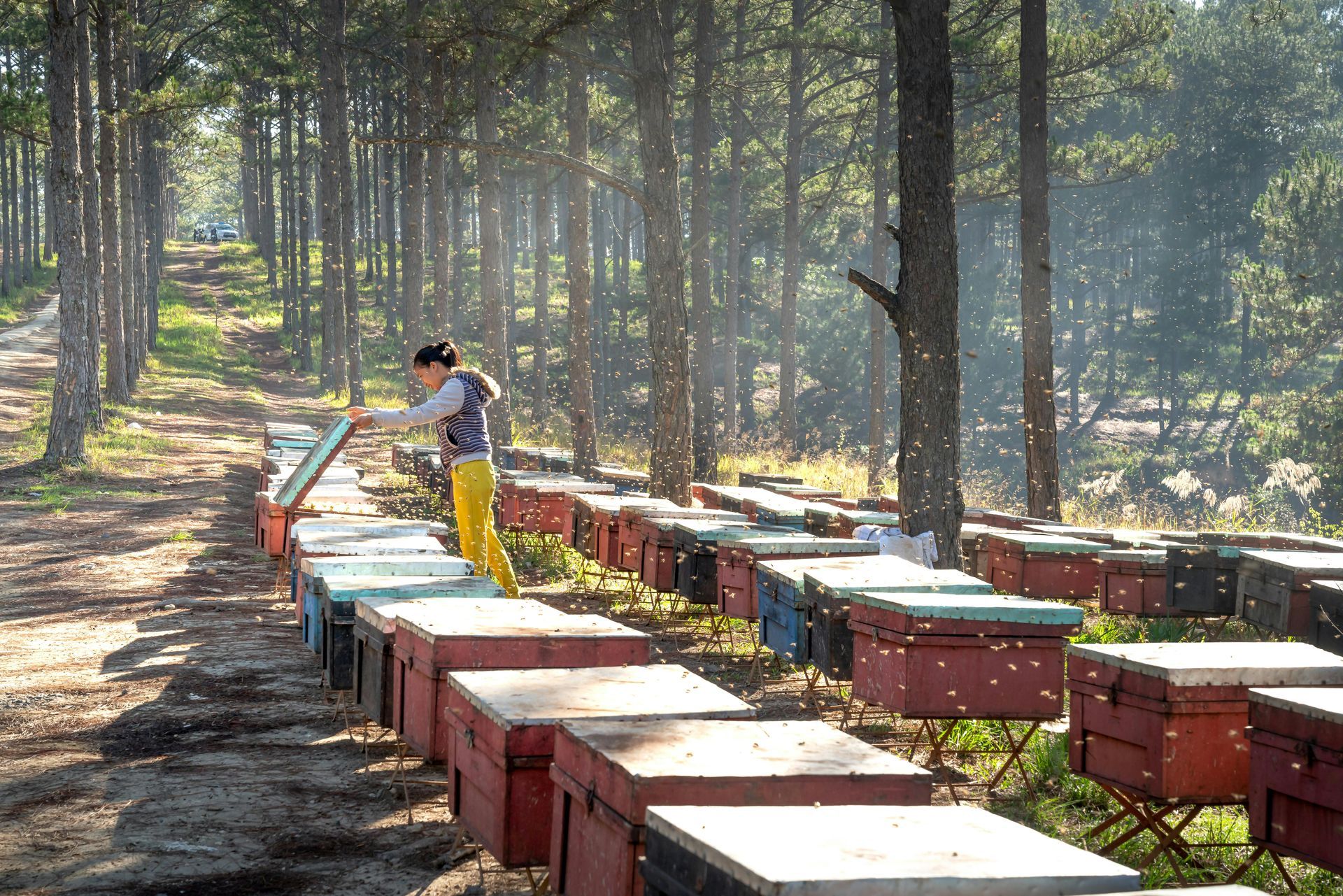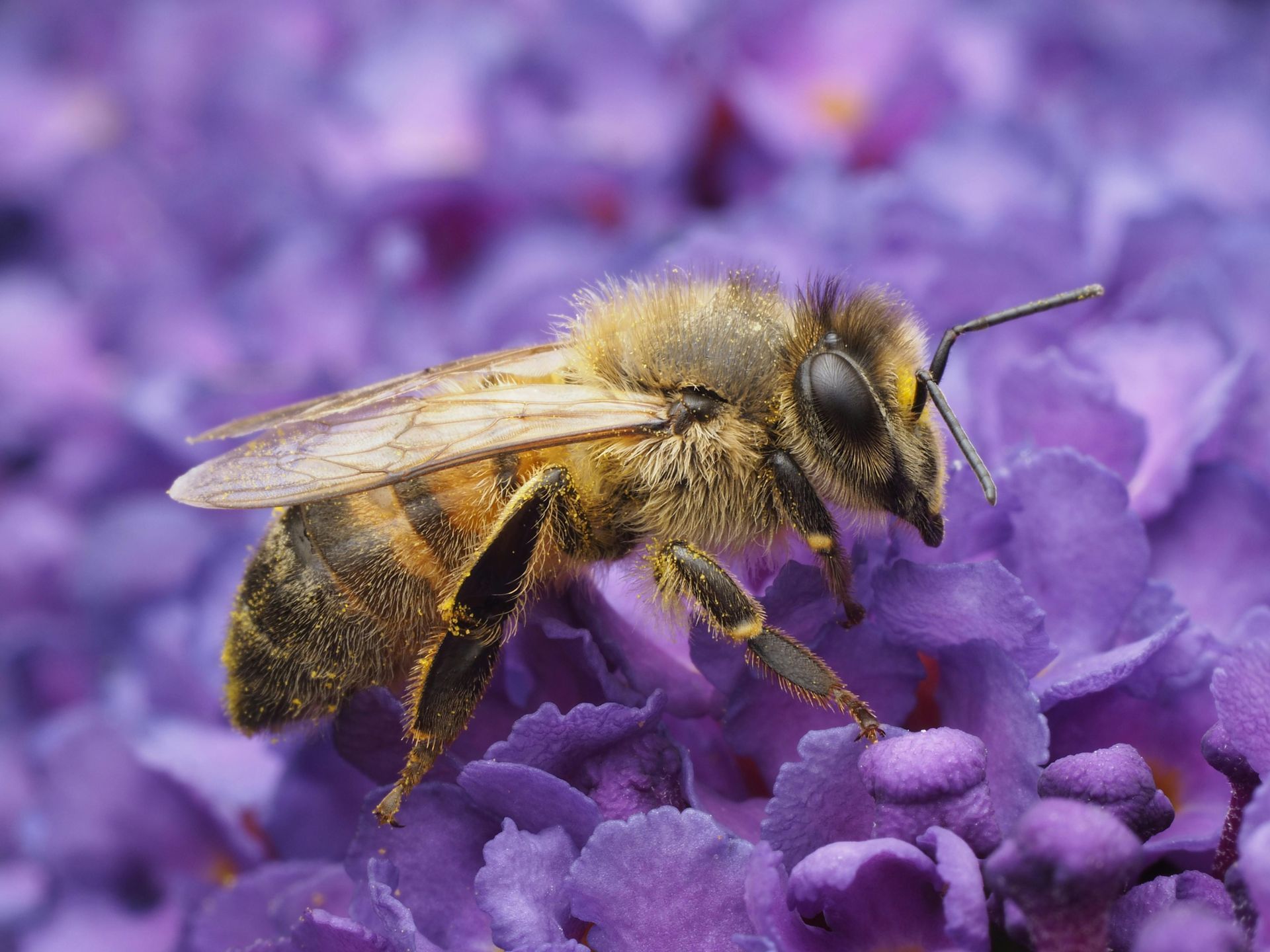Simply Amazing!
What do you think of an organization that is run by females, acts democratically, serves the best interest of the community not the individual, who saves resources for lean times, are amazing architects, nurses, gathers and cares for their young meticulously? Of course, you'd think of ...
Apis mellifera (Western Honey Bee)
Honey bees are vanishing from landscapes where they once thrived.
What makes these insects so critical—and so vulnerable?
Honey bees (Apis mellifera) are one of the most widely managed and ecologically important species on Earth. They pollinate fruit, vegetable, seed, and nut crops across the globe, and their complex behavior makes them one of the most studied animals in biology. But despite their familiarity, many people don’t realize how much our food systems—and ecosystems—depend on their survival.
Apis m., the western honey bee, is essential to agriculture, biodiversity, and global food security. These insects are more than pollinators—they are social organisms with deeply coordinated lives. Their behavior, development, and even their internal anatomy are fine-tuned for survival, communication, and cooperation. And yet, despite decades of research, much of their inner world remains difficult to detect—especially the sounds and signals they use to express stress, status, and change.

"If the bee where to disappear from the surface of the Earth, man would have no more than four years left to live"
-attributed to Albert Einstein
Not all bees, or pollinators, are the same.



How is a honey bee different from other pollinators?
While many animals serve as pollinators, honey bees stand apart with their unique characteristics and economic impact. Unlike butterflies that pollinate by accident as they feed on nectar, honey bees actively collect pollen in specialized structures on their legs. Hummingbirds pollinate using long beaks and tongues to reach deep into flowers, but lack the honey bee's ability to communicate flower locations to others. Bats are important night pollinators especially in tropical regions where they use echolocation to find flowering fruit plants.
Among the 20,000 known bee species, honey bees are distinctive for their perennial colonies housing thousands of individuals, unlike solitary mason bees or small seasonal bumble bee colonies. Though bees are the most economically significant pollinators—with honey bees alone responsible for approximately $15 billion in U.S. crop value annually—other pollinators make vital contributions also.
Butterflies primarily support wildflower populations rather than food crops. Birds pollinate about 5% of plant species humans use for food or medicine. Bats pollinate over 500 plant species including mangoes, bananas, and agave (used for tequila production).
Only honey bees produce substantial surplus honey, maintain year-round colonies, and use complex acoustic signals to coordinate activities. Their transportability for agricultural pollination, sophisticated communication through sound and movement, and social structure make them uniquely valuable to both human food systems and scientific research on collective behavior—particularly for acoustic monitoring research like ours.
Genetic Diversity and Adaptability.
Are there more than one type of honey bee?
Honey bees display remarkable genetic diversity across subspecies that evolved in different geographic regions. European varieties like Italian (Apis m. ligustica) and Carniolan (Apis m. carnica) bees are valued for their gentleness and productivity, while Russian strains show stronger disease resistance. "Africanized" honey bees—hybrids between African and European subspecies—gained misleading notoriety as "killer bees" but represent a successful adaptation to tropical environments; they pose manageable risks in most regions, with their defensive behavior primarily occurring near the hive when disturbed.
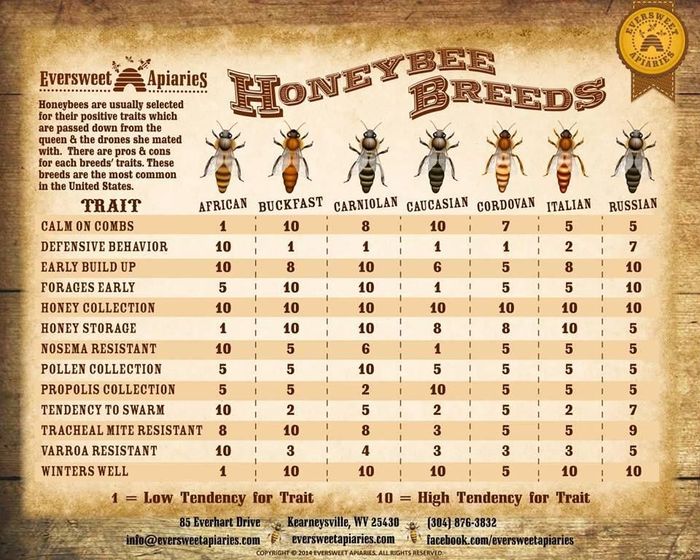
The Colony as a Superorganism

How do tens of thousands of individuals behave as one?
A honey bee colony functions like a living superorganism: each bee is an individual, but no single bee survives on its own. Inside the hive, specialized roles emerge—queen, drones, nurses, guards, and foragers—each contributing to the survival of the whole. Resources are gathered and shared, decisions are made collectively, and temperature, cleanliness, and reproduction are carefully maintained. Understanding the hive as a biological system is key to understanding its vulnerabilities—and how to respond to them.
Bee Development and Lifecycle.
How does a honey bee grow from egg to adult?
Every honey bee colony functions through the coordinated efforts of three distinct castes: the queen, workers, and drones. The sole queen in the colony ensures that the next generation of bees exists to serve the colony. During the Spring and early Summer, a healthy queen can lay up to 2,000 eggs daily. Workers—the colony's female majority—perform age-dependent tasks that evolve from cleaning cells and nursing larvae in their youth to foraging and defending the hive as they mature. Drones, the male bees, serve the sole purpose of mating with queens and if successful, die immediately afterward. This specialized division of labor creates an intricate social structure that enables a single colony to support and maintain tens of thousands of individuals with remarkable efficiency.

A bee's caste is determined through a fascinating interplay of genetics and nutrition. The queen controls gender through selective fertilization: fertilized eggs develop into females (workers or queens), while unfertilized eggs become males (drones). The distinction between worker and queen, however, is entirely food dependent. All female larvae receive royal jelly—a protein-rich secretion—during their first days, but only future queens continue receiving this exclusive diet throughout development. This specialized feeding triggers different gene expression, enabling queen bees to develop reproductive organs and grow nearly twice the size of workers.
The honey bee lifecycle progresses through four distinct developmental stages: egg, larva, pupa, and adult. This metamorphosis begins when the queen deposits a single egg at the base of a wax cell. After three days, the egg hatches into a tiny larva that grows exponentially as nurse bees feed it a nutrient-rich diet. Around day six, worker bees cap the cell with wax, creating a protected environment where the larva pupates—undergoing a complete transformation of its body systems. The developmental timeline varies by caste: queens emerge in just 16 days, workers in 21 days, and drones in 24 days, with environmental factors and seasonal cues influencing these timeframes.
| Cast | Population (est.) | Egg to Adult (days) | Lifespan | Role |
|---|---|---|---|---|
| Queen (female) | 1 | 16 | 1-3 years | reproduction, hive regulation |
| Workers (females) | 10,000 - 50,000 | 21 | 4-6 weeks | building, cleaning, nursing, foraging, guarding |
| Drones (males) | 1,500 - 7,500 | 24 | 1 month | mating (literally nothing else) |
Seasonal Colony Dynamics.
Do bees slim down for summer and add weight in the winter? Sounds human!
Honey bee colonies transform dramatically through the seasons, showcasing remarkable adaptability. The colony experiences rapid population growth in spring as the queen's egg-laying accelerates, foragers collect pollen and nectar, and new (honey)comb construction expands the nest. Summer brings peak population and honey production, with a single colony potentially housing 50,000-60,000 individuals. A strong colony may produce between 60 and 100 pounds of honey during a good season. However, beekeepers only harvest the surplus honey. As fall approaches, the colony prepares for winter by reducing brood rearing, expelling drones, and stockpiling honey. Winter bees are physiologically distinct from summer bees, with fatter bodies and longer lifespans. Winter survival depends on forming a tight cluster around the queen, where workers generate heat by vibrating their thoracic muscles, maintaining core temperatures of around 92°F, even in freezing weather. This cycle of expansion and contraction represents one of the most sophisticated seasonal adaptations in the insect world.

Pollination and Honey Production
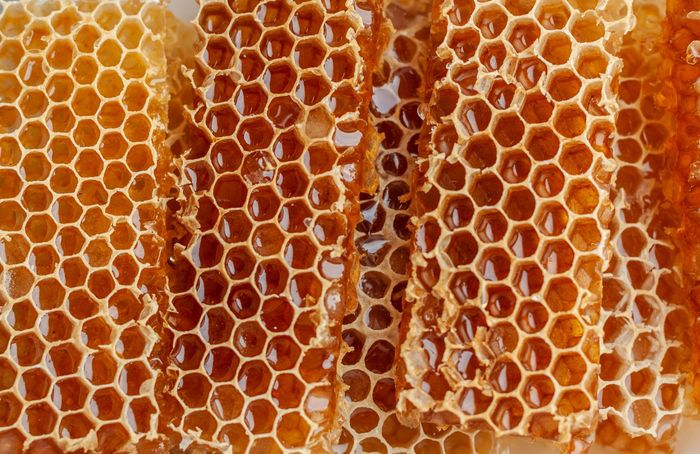
Bees don't just feed themselves—they feed the world.
Honey bees collect nectar as a carbohydrate source and pollen for protein. In the process, they fertilize flowering plants, enabling fruit, seed, and nut development. Crops such as almonds, blueberries, apples, cucumbers, and melons rely on bee pollination. The relationship is mutual: plants offer food, and bees help them reproduce.
One healthy colony can visit over 2 million flowers in a single day, directly supporting food production and habitat regeneration. Honey bees pollinate roughly one-third of the crops we eat. Without them, many food systems would become more expensive, less diverse, and ultimately unstable.
Communication and Hive Behavior.
How do tens of thousands of bees coordinate their behavior without words?
Honey bees rely on movement, scent, touch, and vibration to share information throughout the colony. A forager returning from the field performs a waggle dance, using body angles and duration to show direction and distance to nectar sources. The queen releases pheromones that regulate worker behavior and signal her presence. Guard bees emit alarm chemicals and vibrational warnings. These cues maintain order in the hive, but when something goes wrong, they change. Detecting and interpreting those changes is central to our research.
Please note: Ocellus Solutions does not represent nor make recommendations about any vendor, beekeeping philosophy or product other than our own.
Anatomy and Sound Production.
How do bees make sound, and what can those sounds reveal?
Honey bees generate sound not through vocal cords but wingbeats, abdominal vibrations, and stridulation—the rubbing of body parts together. These vibrations create acoustic signatures tied to specific behaviors like foraging, swarming, fanning, or piping. A colony's queen may emit a particular pattern of sound signaling a swarm event (a natural behavior when the queen and most workers depart for new living quarters). Other sounds may indicate where a food source is located, if there is danger nearby, or as an indication that a new queen is preparing to emerge. These acoustic signals vary based on activity, stress, caste, and emotional state. Our team uses high-resolution microCT scans to study the internal structures contributing to sound production, helping us map specific behaviors to sound profiles.
Amazing anatomical scan of Apis m. by our Teams own, Professor Emeritus, Dr Javier Alba-Tercedor!
